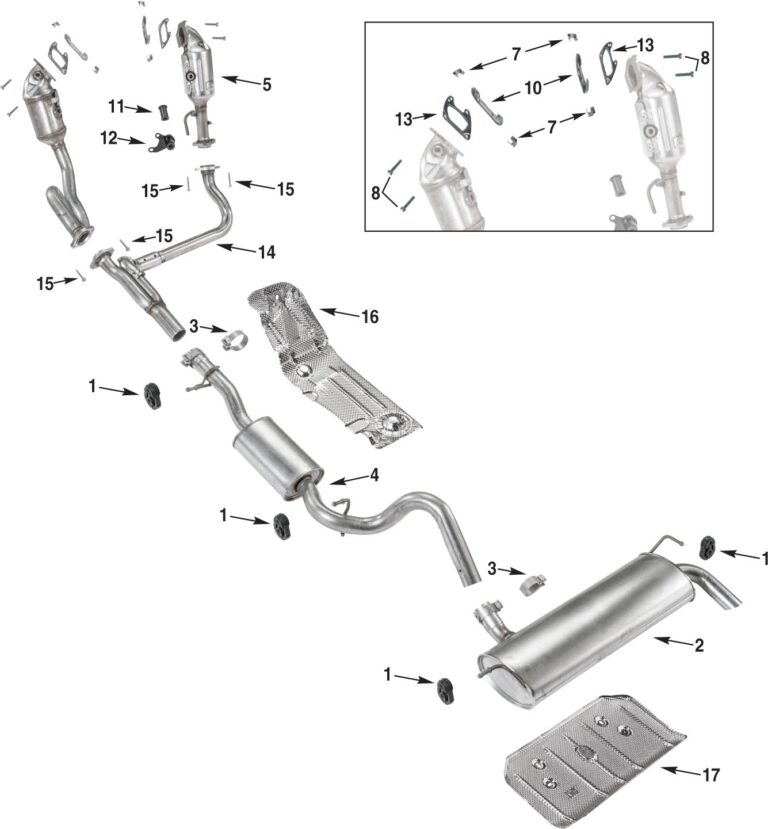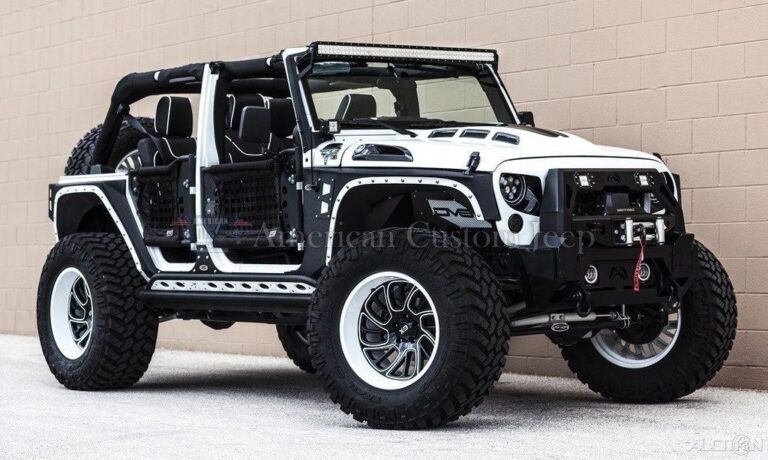91 Jeep Wrangler For Sale: Your Comprehensive Guide to Finding and Owning an Icon
91 Jeep Wrangler For Sale: Your Comprehensive Guide to Finding and Owning an Icon /jeeps.truckstrend.com
The rumble of a classic inline-six, the unmistakable silhouette with its iconic square headlights, and the promise of open-air adventure – for many, the 1991 Jeep Wrangler (YJ) represents the quintessential off-road vehicle. More than just a mode of transport, a ’91 YJ is a statement, a project, and an invitation to a unique automotive lifestyle. If you’re on the hunt for a 91 Jeep Wrangler for sale, you’re not just looking for a used car; you’re seeking a piece of American automotive history, a rugged companion ready for trails, city streets, and everything in between. This comprehensive guide will equip you with the knowledge needed to navigate the market, understand what to look for, and ultimately, find the perfect YJ to call your own.
The Enduring Appeal of the 1991 Jeep Wrangler (YJ) Legacy
91 Jeep Wrangler For Sale: Your Comprehensive Guide to Finding and Owning an Icon
The Jeep Wrangler YJ, produced from 1987 to 1995, holds a special place in the hearts of enthusiasts. It was the first Wrangler to carry that name, replacing the venerable CJ series, and introduced the controversial (yet now distinctive) square headlights that set it apart from all other Jeep generations. For many, the 1991 model year strikes a sweet spot. By this point, the YJ had matured, often benefiting from improvements over the earlier models, notably the introduction of the legendary 4.0L inline-six engine.
What makes the 91 YJ so relevant today? Its enduring appeal lies in its simplicity, robustness, and unmatched off-road prowess. Built on a sturdy leaf-spring suspension system with solid axles, it offers a raw, engaging driving experience that modern, more refined SUVs simply can’t replicate. It’s a vehicle designed for function over form, where removable doors, a fold-down windshield, and an easily convertible top aren’t just features, but core tenets of its adventurous spirit. Whether you’re a seasoned off-roader, a budding mechanic looking for a project, or simply someone who appreciates timeless rugged design, a 91 Jeep Wrangler for sale offers a unique proposition.
Key Powertrain and Drivetrain Options for the 1991 YJ
Understanding the mechanical heart of a 1991 Jeep Wrangler is crucial before you start your search. The powertrain options significantly influence performance, fuel economy, and desirability.
-
Engines:
- 2.5L AMC 150 I4: This four-cylinder engine, producing around 120 horsepower, was the standard option. It’s known for its reliability and decent fuel economy for a Jeep, making it a good choice for those prioritizing economy or lighter off-roading. It’s a workhorse, though not a speed demon.
- 4.0L AMC 242 I6: Introduced in 1991 for the YJ, this inline-six engine is the holy grail for many Jeep enthusiasts. With 180 horsepower and significant torque, it transforms the Wrangler into a much more capable and enjoyable vehicle, both on and off-road. Its legendary durability and robust power delivery make it highly sought after. If you find a 91 Jeep Wrangler for sale with this engine, it’s often a premium.


Transmissions:
- Manual: Most YJs were equipped with manual transmissions. The 2.5L engine typically came with the Aisin AX-5 five-speed manual, while the 4.0L paired with the more robust Aisin AX-15 five-speed manual. Both are generally reliable, but check for smooth shifting and proper clutch engagement.
- Automatic: A three-speed automatic transmission (TorqueFlite 904 or 999, depending on the engine) was an option. While less common, it offers convenience, though with fewer gears, it can feel less responsive than the manuals, especially with the 2.5L engine.

-
Transfer Case: The vast majority of 1991 YJs came with the New Process NP231 "Command-Trac" part-time transfer case. This is a robust and highly capable unit, providing 2H, 4H, and 4L options. Ensure it shifts smoothly into all ranges without grinding or excessive noise.
-
Axles: Typically, YJs came with a Dana 30 front axle and a Dana 35 rear axle. While generally sufficient for stock applications, the Dana 35 rear axle is considered a weak point for aggressive off-roading or larger tires, sometimes leading to upgrades to a Dana 44.
What to Look For When Buying a 1991 Jeep Wrangler: A Buyer’s Guide
Purchasing an older vehicle, especially an off-road icon like the YJ, requires a keen eye and a thorough inspection. Here’s what to prioritize when you find a 91 Jeep Wrangler for sale:
-
Rust, Rust, Rust (The #1 Killer): This is paramount. YJs are notorious for rust.
- Frame: Inspect the entire frame, especially around the leaf spring mounts, skid plate, and body mounts. Look for perforations, significant flaking, or previous patch jobs that might hide worse issues. Frame rust can be a deal-breaker.
- Body Tub: Check the floorboards (under the carpet!), rocker panels, wheel wells, and the area around the tailgate. Water collects easily, leading to rust.
- Windshield Frame: Often rusts around the hinges and bottom edge.
- Fenders/Grille: Look for bubbling paint or actual holes.
-
Engine Condition:
- Cold Start: Listen for strange noises (knocks, ticks), excessive smoke (blue for oil, white for coolant, black for rich fuel mixture).
- Hot Run: Check for leaks (oil, coolant), proper idle, and smooth acceleration. Ensure the temperature gauge stays within normal limits.
- 4.0L Specific: Listen for "piston slap" when cold, which is common but should diminish as it warms up. Check for signs of head gasket leaks (milky oil, sweet-smelling exhaust).
-
Transmission & Clutch:
- Manual: Test all gears. It should shift smoothly without grinding. The clutch should engage and disengage cleanly, without slipping or chattering.
- Automatic: Check fluid level and condition (should be red, not brown or burnt-smelling). Shifts should be firm but not harsh.
-
Transfer Case & 4WD System: Engage 4-High and 4-Low. Listen for clunks or grinding. Drive a short distance (on a loose surface if possible) to ensure it engages properly.
-
Suspension & Steering:
- Leaf Springs: Check for broken or sagging leaves.
- Shocks: Look for leaks.
- Bushings: Inspect all rubber bushings for cracks or deterioration.
- Steering Play: Excessive play in the steering wheel could indicate worn tie rods, drag link, ball joints, or a worn steering box. This can contribute to the dreaded "death wobble."
-
Brakes: Check for spongy pedal feel, grinding noises, or pulling to one side. Inspect brake lines for rust or leaks.
-
Electrical System: Test all lights (headlights, tail lights, turn signals, brake lights), wipers, horn, gauges, and HVAC system. Aftermarket wiring for accessories can be a nightmare if not done correctly.
-
Interior & Top:
- Seats: Look for rips, tears, and overall condition.
- Dashboard: Check for cracks.
- Soft Top/Hard Top: Inspect for rips, tears, clear window clarity (soft top), and proper sealing (hard top). Leaks are common.
-
Modifications: Many YJs are modified. Assess the quality of lift kits, oversized tires, winches, etc. Poorly installed modifications can lead to more problems than benefits. Ensure any lift kit hasn’t compromised steering or suspension geometry.
Common Issues and Solutions for 91 YJs
Even a well-maintained 91 YJ might present some common quirks and issues inherent to its age and design. Knowing these can help you budget for potential repairs.
- Rust Mitigation: While major frame rust is often terminal, minor body rust can be addressed with welding, patch panels, or even full body tub replacements (though costly). Regular washing and waxing, especially in rust-prone areas, can slow down further deterioration.
- "Death Wobble": This terrifying violent shaking of the front end at speed is a common Jeep phenomenon. It’s usually caused by a combination of worn steering components (ball joints, tie rods, track bar bushings), unbalanced tires, or improper caster angles. A thorough inspection and replacement of worn parts, along with a proper alignment, usually resolves it.
- Electrical Gremlins: Older wiring, corroded grounds, and aftermarket additions can lead to intermittent electrical issues. Tracing wires and cleaning grounds often solves many problems.
- Fuel System Issues: For 4.0L models, aging fuel pumps or clogged injectors can cause rough idling or poor performance. Carbureted 2.5L models might need carburetor cleaning or rebuilding.
- Leaf Spring Sag: Over time, leaf springs can sag, especially if the Jeep has been overloaded or heavily off-roaded. Replacement with new stock or aftermarket springs (often providing a small lift) is a common solution.
- Soft Top Wear: The original soft tops are likely worn out. Replacements are readily available in various materials and colors.
The Appeal and Benefits of Owning a 91 YJ
Despite the potential challenges, owning a 1991 Jeep Wrangler offers a unique and rewarding experience:
- Simplicity & DIY Friendliness: Unlike modern vehicles, the YJ is relatively simple mechanically. This makes it a fantastic platform for learning to wrench, with ample online resources and a passionate community to guide you.
- Rugged Durability: These Jeeps were built tough. With proper maintenance, they can last for decades, shrugging off conditions that would defeat lesser vehicles.
- Exceptional Off-Road Capability: Short wheelbase, solid axles, good ground clearance, and a robust 4WD system make the YJ an incredibly capable trail machine right out of the box, with endless possibilities for upgrades.
- Classic Styling & Character: The square headlights, exposed hinges, and upright stance give the YJ an unmistakable character that stands out in a sea of generic SUVs.
- Strong Aftermarket Support: The YJ benefits from an enormous aftermarket, meaning parts for repair, restoration, and modification are readily available, often at reasonable prices.
- Thriving Community: Owning a Jeep means joining a global community of enthusiasts. From local trail rides to online forums, you’ll find endless support, advice, and camaraderie.
- Open-Air Freedom: Nothing beats the experience of driving a Jeep with the top down, doors off, and windshield folded. It’s an immersive, exhilarating experience unique to the Wrangler.
- Potential for Appreciation: Well-preserved, rust-free, or expertly restored YJs, especially those with the 4.0L engine, are slowly increasing in value as classic car enthusiasts recognize their iconic status.
Valuation and Pricing Considerations for a 91 Jeep Wrangler For Sale
The price of a 91 Jeep Wrangler can vary dramatically based on several factors. Condition is king, followed by mileage, engine type, and the quality of any modifications.
- Condition: This is the primary determinant. A rust-free, well-maintained, low-mileage 4.0L YJ will command a significantly higher price than a rusty, high-mileage 2.5L project.
- Engine: 4.0L models consistently fetch more than 2.5L models due to their superior power and durability.
- Mileage: Lower mileage generally means a higher price, assuming maintenance records support it.
- Location: Prices can fluctuate regionally, often influenced by climate (less rust in dry areas) and local demand.
- Hard Top vs. Soft Top: Having both a hard top for winter and a soft top for summer adds value.
- Modifications: Quality, tasteful modifications (e.g., a well-installed lift kit, upgraded bumpers) can add value, but poorly done or extreme modifications can detract from it.
91 Jeep Wrangler For Sale: Estimated Price Guide
This table provides a general price range. Always remember that the specific condition, maintenance history, and local market can cause variations.
| Condition Category | Mileage (Approx.) | Engine Type | Transmission | Price Range (USD) | Key Notes |
|---|
91 Jeep Wrangler For Sale: Your Comprehensive Guide to Finding and Owning an Icon
The rumble of a classic inline-six, the unmistakable silhouette with its iconic square headlights, and the promise of open-air adventure – for many, the 1991 Jeep Wrangler (YJ) represents the quintessential off-road vehicle. More than just a mode of transport, a ’91 YJ is a statement, a project, and an invitation to a unique automotive lifestyle. If you’re on the hunt for a 91 Jeep Wrangler for sale, you’re not just looking for a used car; you’re seeking a piece of American automotive history, a rugged companion ready for trails, city streets, and everything in between. This comprehensive guide will equip you with the knowledge needed to navigate the market, understand what to look for, and ultimately, find the perfect YJ to call your own.
The Enduring Appeal of the 1991 Jeep Wrangler (YJ) Legacy
The Jeep Wrangler YJ, produced from 1987 to 1995, holds a special place in the hearts of enthusiasts. It was the first Wrangler to carry that name, replacing the venerable CJ series, and introduced the controversial (yet now distinctive) square headlights that set it apart from all other Jeep generations. For many, the 1991 model year strikes a sweet spot. By this point, the YJ had matured, often benefiting from improvements over the earlier models, notably the introduction of the legendary 4.0L inline-six engine.
What makes the 91 YJ so relevant today? Its enduring appeal lies in its simplicity, robustness, and unmatched off-road prowess. Built on a sturdy leaf-spring suspension system with solid axles, it offers a raw, engaging driving experience that modern, more refined SUVs simply can’t replicate. It’s a vehicle designed for function over form, where removable doors, a fold-down windshield, and an easily convertible top aren’t just features, but core tenets of its adventurous spirit. Whether you’re a seasoned off-roader, a budding mechanic looking for a project, or simply someone who appreciates timeless rugged design, a 91 Jeep Wrangler for sale offers a unique proposition.
Key Powertrain and Drivetrain Options





